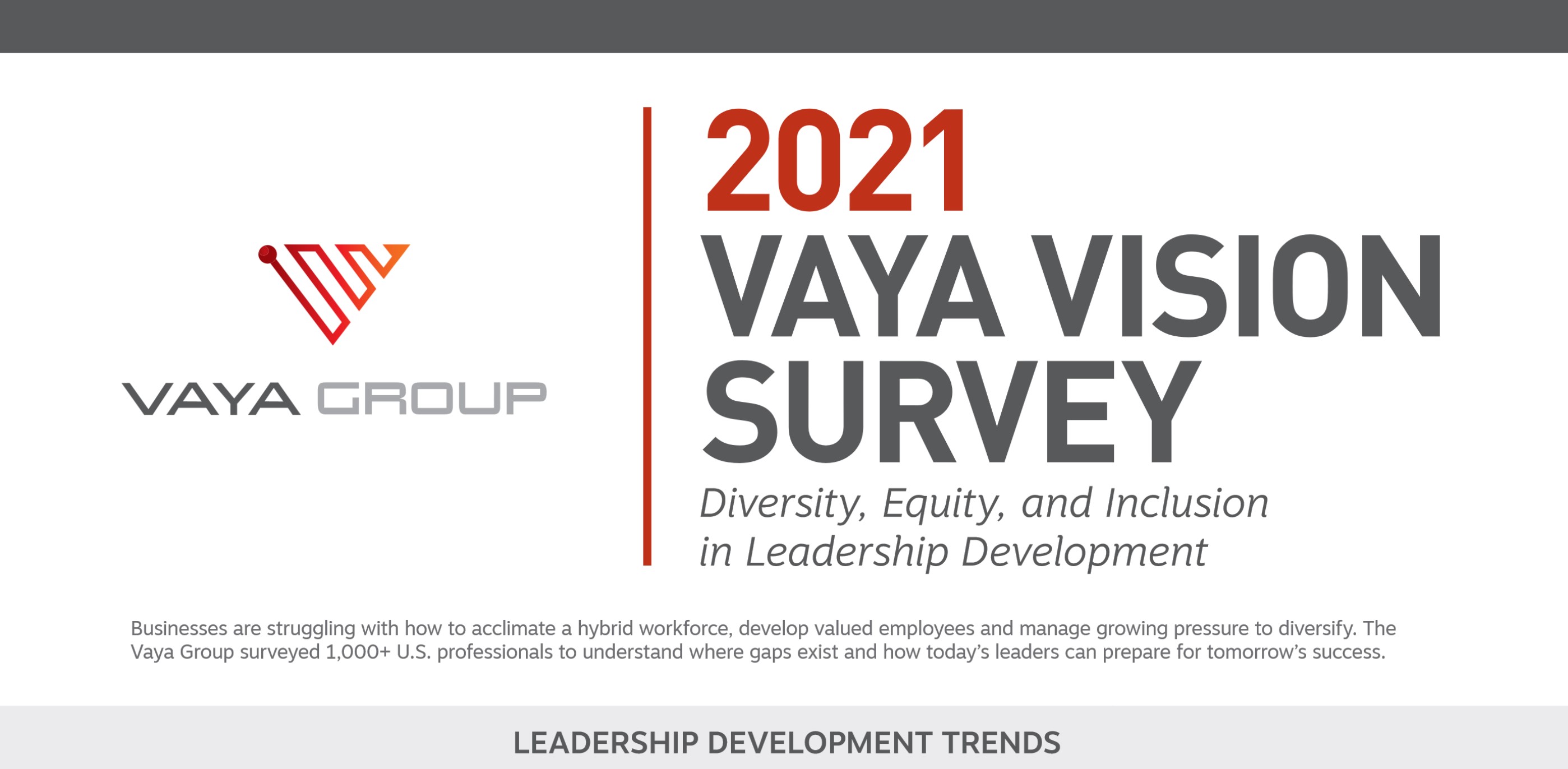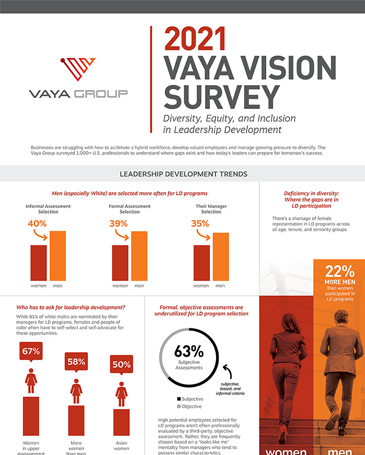Prejudice in Leadership Growth Exists – What's Next?
When the results of our annual Vaya Vision survey came in, I was a bit shocked, but not entirely surprised. We asked over 1,000 U.S. professionals questions about leadership development (LD) opportunities within their organizations, and their feedback painted a not-so-rosy outlook for women and diverse talent.
The survey revealed a significant gender gap in employee selection and participation in LD programs. When it comes to developing emerging leaders and high potential (HiPo) talent, the findings showed that white males appear to have several privileges over their female counterparts.
According to the Vaya Vision survey results:
- 22% more men than women participate in LD programs – that’s nearly a quarter more of the workforce.
- Women have to ask to be included in LD opportunities, whereas men are usually selected. As many as 58% more women need to self-advocate for LD programs, with the biggest group being women in upper management (67%), followed by Asian women (50%).
- 40% more males than females are informally assessed for enrollment in LD programs, and 35% more men are selected by their managers via a subjective “looks like me” approach.
- 63% of emerging leaders are chosen based on subjective, biased, and informal criteria vs. objective criteria and a professional, formal assessment.
The Implications of Inequity
As businesses struggle with the uncertainty of today’s job market, these findings are highly concerning. The fact that females and people of color are not given the same opportunity as men to fully develop their leadership skills has several consequences:
- HiPo women and diverse emerging leaders will eventually leave and look for advancement opportunities elsewhere.
- Your executive pipeline will lack leadership diversity, putting your company at a competitive disadvantage.
- Candidates who are selected using subjective, informal criteria may not necessarily turn out to be the best future leaders.
3 Tips to Nurture Emerging Leaders
So, you may be wondering, why am I so passionate about this topic? For several reasons. As the founder of the Vaya Group, I’m committed to our mission of helping organizations empower their HiPo employees to be future leaders. Also, as a business owner myself, I pride our firm on a highly talented, healthy balance of male and female executive consultants. They share my enthusiasm for equality and fairness in helping emerging leaders of all genders and races advance and succeed.
You can, too. You have the power to eliminate biases and make a real difference in developing the next generation of leaders. Here are three tips to guide your LD initiatives and to foster a thriving environment for all employees:
- Identify emerging leaders using objective, third-party assessments. When you consider that only 37% of companies use formal, scientifically proven evaluations to select HiPo candidates for LD programs, that leaves the other 2/3 vulnerable to making the wrong choices based on subjective criteria.
- Develop HiPo employees early. Don’t wait until it’s too late, and a talented emerging leader resigns due to lack of advancement opportunities. Demonstrate your commitment to their development sooner rather than later. This way, you’ll have ample time to work with that individual and align their career path with your company’s growth.
- Make LD training individualized and on-demand. Where’s the best environment to foster LD? The answer is anywhere. Requirements have changed with today’s hybrid workforce. Just-in-time virtual development tools that give employees 24/7 online access to a personalized curriculum are a strong supplement to existing LD training methods. Platforms like VayabilityTM are accessible, affordable, and adaptable to individuals of all levels and backgrounds.
Overcoming inherent bias in LD selection and training is best eliminated through prevention. First, recognize that – although not intentional – it exists. Using independent assessments, identifying leadership potential early and supporting employees with personalized training are the best ways to ensure success – theirs and yours.
Learn More
For more information on the Vaya Vision survey, please visit: vayapath.com/vayavision.
For related content, check out our other blog: 4 Ways Women Can Propel Their Leadership Journey





.png)
